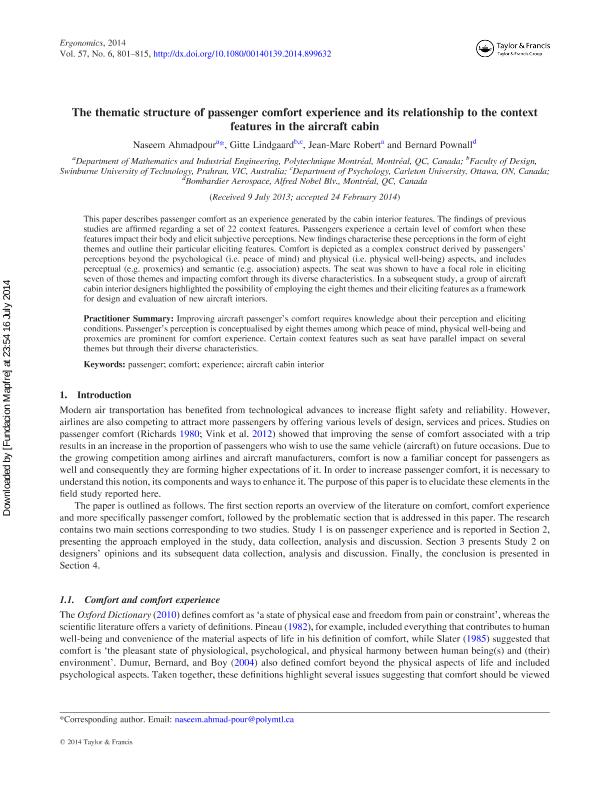The Thematic structure of passenger comfort experience and its relationship to the context features in the aircraft cabin

Contenido multimedia no disponible por derechos de autor o por acceso restringido. Contacte con la institución para más información.
| Tag | 1 | 2 | Valor |
|---|---|---|---|
| LDR | 00000cab a2200000 4500 | ||
| 001 | MAP20140025688 | ||
| 003 | MAP | ||
| 005 | 20140724124916.0 | ||
| 008 | 140717e20140602esp|||p |0|||b|spa d | ||
| 040 | $aMAP$bspa$dMAP | ||
| 084 | $a875 | ||
| 245 | 0 | 4 | $aThe Thematic structure of passenger comfort experience and its relationship to the context features in the aircraft cabin$cNaseem Ahmadpour...[et.al] |
| 520 | $aThis paper describes passenger comfort as an experience generated by the cabin interior features. The findings of previous studies are affirmed regarding a set of 22 context features. Passengers experience a certain level of comfort when these features impact their body and elicit subjective perceptions. New findings characterise these perceptions in the form of eight themes and outline their particular eliciting features. Comfort is depicted as a complex construct derived by passengers' perceptions beyond the psychological (i.e. peace of mind) and physical (i.e. physical well-being) aspects, and includes perceptual (e.g. proxemics) and semantic (e.g. association) aspects. The seat was shown to have a focal role in eliciting seven of those themes and impacting comfort through its diverse characteristics. In a subsequent study, a group of aircraft cabin interior designers highlighted the possibility of employing the eight themes and their eliciting features as a framework for design and evaluation of new aircraft interiors. | ||
| 773 | 0 | $wMAP20100019818$tErgonomics : the international journal of research and practice in human factors and ergonomics$dOxon [United Kingdom] : Taylor & Francis, 2010-$x0014-0139$g02/06/2014 Volumen 57 Número 6 - junio 2014 |

